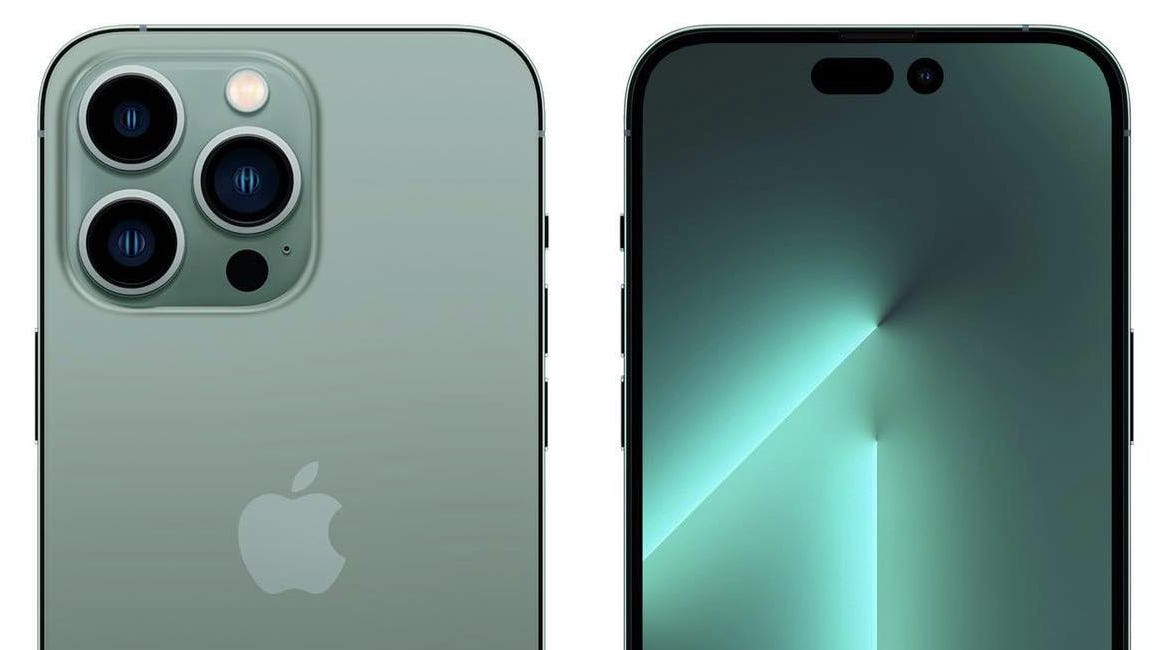05/10 Update below. This post was originally published on May 7
Apple’s iPhone 14 Pro plans are daring but it is arguably the company’s refusal to make any meaningful changes to the standard iPhone 14 models which is where the real shock lies. And that just got worse…
Following eye-opening reports in February that both the iPhone 14 and iPhone 14 Max will again lack Apple’s 120Hz ProMotion display technology, now the industry’s most accurate insider has doubled down on this news.
Apple iPhone 14 Pro Max render based on multiple leaks
Ben Geskin
09/05 Update: hugely popular (8.3M subscribers) Apple YouTuber EverythingApplePro (aka Filip Koroy) has delved further into the new iPhone 14 design. Koroy obtained schematics of the iPhone 14 Pro models and 3D printed them, admitting that “it doesn’t appear that much has changed at first glance” but on closer inspection they reveal the earpiece has been repositioned higher in the phone.
“Another surprising change that I didn’t notice at first but then I cannot not see is the increased corner radiuses alongside thinner bezels which are getting 21% thinner. You’ll have more screen but less bezel and more of a pleasant rounded shape which is going in the direction of the Series 7 Apple Watch.”
Koroy warns that these changes don’t add a lot of screen estate, but it does take the iPhone lineup in a bold new direction. Koroy also adds that the schematics “absolutely confirmed” the new dual hole punch on the Pro models with the standard iPhone 14 and new iPhone 14 Max retaining the notch. For iPhone 14 Pro buyers, 2022 looks like an exciting upgrade year, but those considering the standard iPhone 14 should probably wait until 2023 when bigger changes are coming.
05/10 Update: further iPhone display plans have now been revealed and they come straight from Apple itself. Spotted by specialist site patentlyappletoday the US Patent and Trademark Office officially granted Apple a patent for a next-generation in-display fingerprint reader for tablets and smartphones.
The patent itself describes the use of optical fibers positioned behind the display, which can capture fingerprint data at much higher rates and with greater accuracy than anything we have seen before. Moreover, with reports Apple tested the iPhone 13 with an in-display reader only to pull it before mass production, there has been a lot of speculation that the iPhone 14 will finally bring this pandemic-friendly authentication method back to iPhones in addition to Face ID.
Needless to say, this patent shows Apple’s ongoing interest in the technology, which it controversially dropped from premium iPhones with the iPhone X back in 2017. It also fits with Apple’s philosophy of only adding features and functionality when the company feels it can do so in a class-leading manner. Clearly, something is happening here.
That said, my personal opinion is that we may have a longer wait. Pressure from the pandemic is easing with improved Face ID recognition for mask wearers delivered in iOS 15.4 and Apple is usually loathe to add major new features in the years it changes iPhone design — which is happening to Pro models in 2022 — to minimize risk. Dual biometrics are the future (touch your display while looking at your phone brings military-grade security) so I hope I am wrong, but be wary of sources claiming this makes the tech a done deal for the iPhone 14 lineup.
In an attempt to correct an inaccurate report, Ross Young, CEO of Display Supply Chain Consultants (DSCC), tweeted that “Only Pro models” will sport ProMotion. And given Young’s remarkable track record, this looks like the final nail in the coffin for technology which has become both popular and ubiquitous in mid-to-high-end Android smartphones in recent years.
And my feeling is Apple has boxed itself into a corner here. This year, Apple is determined to increase the separation between its Pro and non-Pro iPhones and it cannot do this while giving standard iPhone models a feature called ‘ProMotion’. This is despite the fact there is nothing particularly Pro about ProMotion in 2022. It is a rare example of Apple’s marketing jargon coming back to bite the company and it could not come at a worse time.
Under another name, ProMotion would have been an easy and popular upgrade for the iPhone 14 and iPhone 14 Max. High refresh rate screens bring a level of smoothness and responsiveness that simply isn’t possible on a 60Hz display, while also reducing eye strain. Apple itself markets ProMotion as the “display that changes the game.”
Apple markets ProMotion on the iPhone 13 Pro as game changing…
Manzana
But without it, the iPhone 14 and iPhone 14 Max are left with almost nothing to recommend them. In an unprecedented move, the iPhone 14 and iPhone 14 Max will reuse the design, display tech, camera modules and chipset from the iPhone 13. All the big upgrades are being saved for iPhone Pro models.
Moreover, this comes at a time when Apple is likely to be forced into price upgrades across the range. So Apple needed an easy win and ProMotion could have been it. As it stands, market analysts are now raising questions about the range’s potential success, and they might just have a point.
___
Follow Gordon on Facebook
More on Forbes
.
